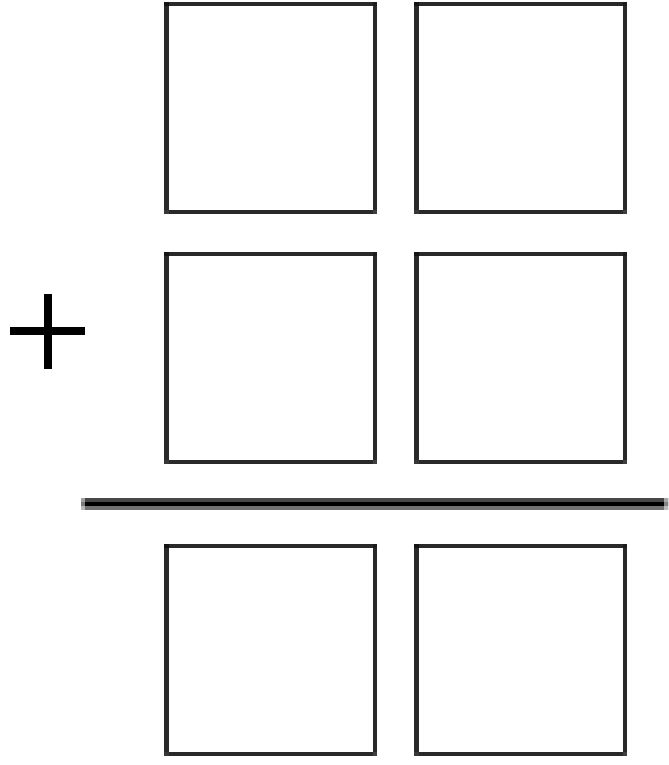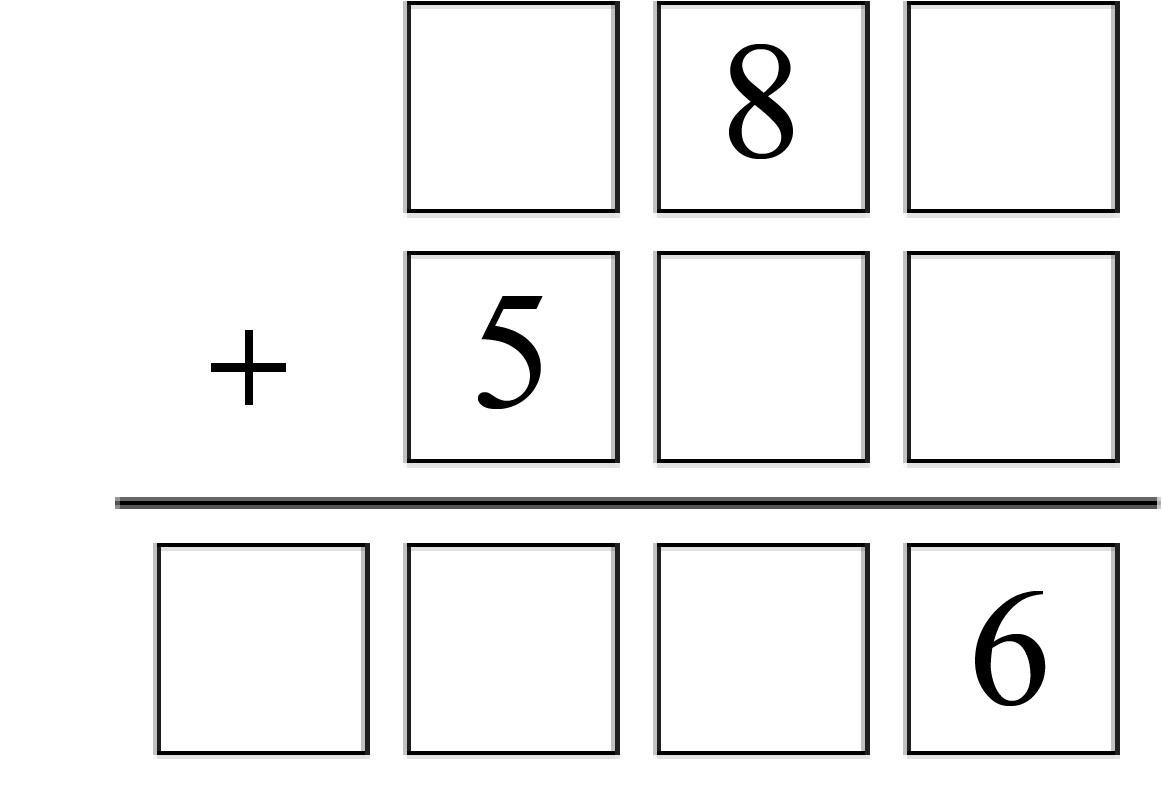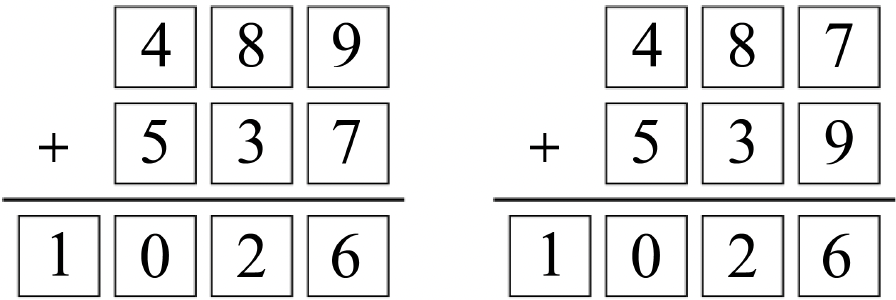Notice that \(98\) is the closest number to \(99\) that could possibly be formed using the digits \(1\), \(3\), \(6\), \(7\), \(8,\) and \(9\). Let’s see if we can arrange the remaining digits, \(1\), \(3\), \(6,\) and \(7\), to get a sum of \(98\).
Using the digits \(1\), \(3\), \(6,\) and \(7\), to get a sum with a ones digit of \(8\), we must place the \(1\) and the \(7\) in the two boxes in the ones column. If we place the remaining digits, \(3\) and \(6\), in the tens column, we will get a sum with a tens digit of \(9\). Therefore, it is possible to arrange the digits to get a sum of \(98\), which is the closest possible sum to 99. We also see that there are four possible ways to arrange the digits in the boxes to produce this sum.
Given the digits \(0\), \(1\), \(2\), \(3\), \(4\), \(7,\) and \(9\), along with the placement of the \(6\), the closest number to \(1000\) that could be formed is \(0976\). The next closest number is \(1026\).
We will first see if we can place the digits to get a sum of \(0976\). If the sum is \(0976\), then the digits \(0\), \(9\), and \(7\) have been placed, and the remaining boxes will be filled with the digits \(1\), \(2\), \(3,\) and \(4\). Of these digits, the only two that have a sum with ones digit \(6\) are \(2\) and \(4\). Therefore, the \(2\) and the \(4\) would need to go in the ones column. This leaves \(1\) and \(3\) to be placed. Looking at the tens column of the sum, we need to place one of these numbers in the tens column so that the sum of that number with 8 has a ones digit of \(7\). This is not possible. Therefore, we see that it is not possible to place the numbers so that the sum is \(0976\).
Next, we try to place the digits to get a sum of \(1026\). If the sum is \(1026\), then the digits \(0\), \(1\), and \(2\) have been placed, and the remaining boxes must be filled with the digits \(3\), \(4\), \(7,\) and \(9\). Of these digits, the only two that have a sum with ones digit \(6\) are \(7\) and \(9\). Therefore, the \(7\) and the \(9\) would need to go in the ones column. This leaves \(3\) and \(4\) to be placed. Looking at the tens column of the sum, we need to place one of these numbers in the tens column so that the sum of that number with \(8\) and \(1\) (the carry from the ones column) has a ones digit of \(2\). This is possible if we place the \(3\) in this box. That leaves the \(4\) to go in the empty box in the hundreds column. Indeed, we see that the sum of \(4\) with \(5\) and \(1\) (the carry from the tens column) is \(10\), as required.
Thus, it is possible to arrange the digits to get a sum of \(1026\), and this is the closest we can get to a sum of \(1000\). We see that there are two possible ways to arrange the digits in the boxes to produce this sum.




